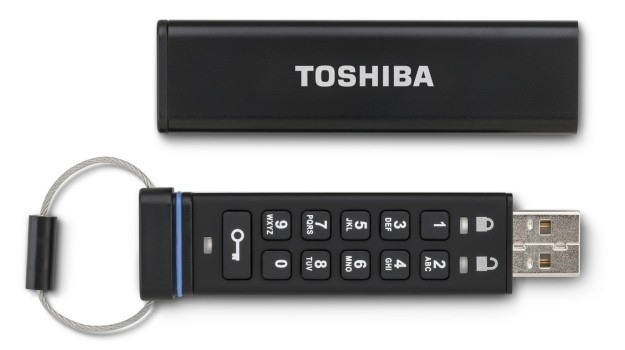Can a Virus Copy Files Uploaded to a Usb Flash Drive
From the University of Illinois to Iran (and everywhere in-between), USB wink drive malware is a serious take a chance
Back in 2016, researchers from the Academy of Illinois left nearly 300 unmarked USB wink drives in and around the Academy campus to run into how people reacted to them. All in all, 98% of the dropped devices were plant by students and staff, and the study found that at least half of these were plugged into a host device to try to access the content.
For a hacker trying to contaminate a computer network, those statistics are pretty much a slam dunk and paints a picture of how devil-may-care nosotros can exist with our USB devices.
Allow's hash it out.
A History of USB Drive Malware
USB drives take been around for over 20 years, offering users a user-friendly method to shop and move files betwixt computers that aren't digitally connected to each other.

Cyber threat actors accept routinely abused this capability with the most famous example being the 'world's first digital weapon,' the Stuxnet worm first discovered dorsum in 2010, which used USB devices to attack the network of an Iranian nuclear facility.
Although USBs are still oftentimes used, cloud services of today, such as Dropbox and Google Drive, have taken on much of the responsibility when information technology comes to file storage and transfer, and there is a greater agreement of the security risk that can exist posed by USB devices. Millions of USB devices are still designed, produced and sold each yr with many used at home and at work (they're also however a very popular item during promotional giveaways).
In 2017, a Kaspersky Lab information study revealed that every twelvemonth around one in iv USB users beyond the globe are affected by a 'local' cyber incident. This can refer to breaches that upshot from viruses that are present on the user's computer or are introduced by infected removable media.
The USB Malware Security Claiming
USB drives go on to pose a large claiming when information technology comes to data security for both consumers and businesses.
Although tactics to block threats of a malicious nature from USB drives have been around almost as long equally the drives themselves and the danger of contracting a malware infection is widely understood, USB malware attacks are still occurring.
Why? People continue to plug USB drives into computer systems that are unprotected, so they're making information technology easy for cybercriminals to penetrate their data.
No matter the various safeguards available, the fact remains that there volition always be a considerable percentage of devices that aren't running antivirus software, not set upwards to scan USB drives, or non set to disallow autorun.
This ways that an infected flash bulldoze plugged into an unprotected device could instantly infect it and spread the virus through any network it's attached to.
How Practice USB Devices Go Infected with Malware?
Information technology'south possible to come across both unintentional and intentional infection. The Stuxnet worm is an example of the latter, where someone uploads malicious code onto the drive with the intention of filtering the code into the targeted network.
Unintentional infection might occur when someone plugs an unprotected USB into a poorly safeguarded organisation in an internet café, airport or anywhere with poor public endpoint security (which is about lxx% of places). You may detect the virus sometime afterward you've plugged the device into your car, only there's no telling what impairment may take already been done.
How to Protect Your USB Device
If you lot're using a USB drive to transfer files across several host devices, it can make y'all vulnerable to malware – and y'all can never be too careful when it comes to USB security, particularly if you lot're handling sensitive data.
Contracting a virus tin can take a matter of seconds from the moment you plug the device into the host network. Whether you lot contract ransomware, which locks downwards your entire system, or silent malware that infects your car quietly, information technology could exercise huge damage by the time you've noticed it.
Unfortunately, USB flash bulldoze malware doesn't work like an email virus (which requires you lot to click on something), all it takes is plugging an infected USB into a machine.
Having said that, in that location are several different methods that you can use to ensure that your data isn't exposed and about to fall into the wrong easily.
How to Defeat USB Drive Malware: Software Security
Write Protectors
If your USB bulldoze doesn't include a hardware switch for write protection, so you lot should be using a software write protector, such equally USB Write Protect ii.0. A software write protector will effectively prevent any data from being deleted as well as protect the device from malware being written onto your drive.
USB Anti-Virus
If yous have write protection enabled, there is withal a possibility of contracting a virus when you go to transfer files, and so information technology makes sense to apply a decent USB anti-virus such as ClamWin.
Encryption
If you lot're looking to protect your privacy by securing your information, you could install an encryption plan similar VeraCrypt or BitLocker to Windows for password protection on your USB device.
This ways that fifty-fifty if someone has access to your device, it volition make it much harder for them to retrieve sensitive information or hide malicious files within your existing files and folders.
Protect Your Host Device
If your device is unintentionally infected, you probably won't know about information technology immediately. The best thing to do is to protect yourself from the outset by installing software that will inform you lot if your removable device is infected with malicious malware.
USB Firewall volition protect your computer from third-political party programmes introduced from a USB device by running in the groundwork and informing yous of suspicious activity.
How to Defeat USB Drive Malware: Hardware Security

Image via Geek.com
Keypad Flash Drive
Some flash drives are available with a keypad that allows you to create a unique password, which volition physically lock the device (like a padlock). Y'all'll but need to enter the unique password to access your device.
Self-Destruct
Wink drives, such as Ironkey, will 'self-destruct' if the password is entered incorrectly as well many times. There are also some flash drives which are configured to delete files later on a certain period.
Hardware Encryption
If yous demand to transfer serious data onto a flash drive, y'all could opt for a wink drive with 128-flake AES hardware encryption. Hardware encryption is ofttimes considered a meliorate pick than software encryption since information technology doesn't carry the same chance of getting hacked.
Decision
Stopping USB drive malware is important for individuals and for organizations. USB devices are even so very much part of our everyday lives at work and at dwelling, despite the emergence of Dropbox and Google Drive. However, unless nosotros acquire to protect the information we have stored on our USB devices, nosotros're guilty of making things much easier for those who wish to misuse our data.
donaldsonpribue1956.blogspot.com
Source: https://www.thesslstore.com/blog/usb-flash-drive-malware-how-it-works-how-to-protect-against-it/
0 Response to "Can a Virus Copy Files Uploaded to a Usb Flash Drive"
Post a Comment